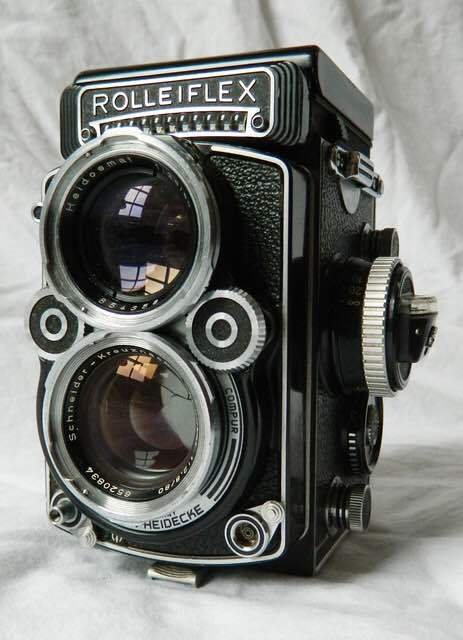
In general (this is how I think of it anyway), there are 4 main groups of Rolleiflex models: The Rolleiflex Standard Also, to make things simpler, this write up will focus primarily on 6圆 Rolleiflex, and not the Rolleicord which is a similar but different camera, or the Tele and Wide models. I might get some facts wrong, but I will attempt to dispel some of the confusion. I am not any kind of Rollei expert, but I have done some research into the cameras, and I own 3 Rolleiflex and have used more. This is where a lot of the confusion comes from for people first learning about Rollei TLRs. A 1969 camera will usually cost more than a 1954 camera, and a 2.8 model will typically cost more than the same era 3.5 model, etc. The cost of a Rolleiflex can vary drastically, but in a general sense the newer the camera and the better the features, the more it will cost. It is not my intention to misinform, and I apologize if I get some details incorrect. Because of the nature of this article, I may generalize, or I may leave some details out. Couple that with the fact that most Rolleiflex don't actually have any model number on them, and it can get quite confusing.īefore going to far, I just want to point out that this guide is meant as a general introduction to classic Rolleiflex, and is not meant to be a super accurate history of the cameras. Why was one camera selling for $300, and another that looked the same selling for $4000! Rolleiflex were made for nearly a century, and other than the very early models and some special models, they really didn't change in looks for the most part. I know that when I first started looking at Rolleiflex, I couldn't make heads or tails of it. It was taken with the Rolleiflex sat next to mine in the image at the top of the article.If you aren't real familiar with all the different Rollei TLR models, and have spent a little time looking at them on ebay, you will likely find it rather confusing. It’s me in the photograph, along with my younger brother and mother. My father made this photograph, likely in 1958, on Majuro Atoll in the Marshall Islands. A full-body service by Harry Fleenor will cost a minimum of $700.Īre they worth the investment? I think the answer to that question is yes, if you want a camera that will (with care) be your partner for the long haul, and reward a mastery of technical photographic skill with images of exquisite detail and resolution. Good condition Rolleiflex 28Fs will likely cost between $2,500 and $3,000. If you’re interested in picking up a Rolleiflex, be prepared to pay for a clean, serviced camera (and a service from a recognized repair specialist). But like most of the Rolleiflex’s problems, the slow top shutter speed is indicative of a leaf shutter, which can be used at any speed with a flash. A shutter that tops out at 1/500 of a second can be a challenge to photographers who are used to shooting at 1/4000 of a second and getting creamy out of focus areas. Many Rolleiflex cameras have dim viewfinders, a problem that can be remedied by installing a bright screen. The most obvious of the camera’s shortcomings are using a viewfinder that flips left and right.
Rolleiflex 2.8 pictures how to#
But the do indicate a level of comfort with a camera’s strengths, and some knowledge of how to work around a camera’s inevitable weaknesses, of which the Rolleiflex has in spades. Nor do they define one’s style or approach to photography.

Of course, a few photographs don’t make a career. This black and white portrait of my friend Milañ was made in 2019 as part of an ongoing project in the Marshall Islands.

The five photographs here illustrate why I love this camera. I wrote about using this camera for photographing a jazz ensemble rehearsal here. It has an upgraded Maxwell bright screen installed by Rolleiflex repair guru Harry Fleenor, who also overhauled the camera. It is a late model Rollei, built in the late 1970s a few years before Franke & Heidecke went belly up.
Rolleiflex 2.8 pictures full#
I’ve also sold a number of cameras over the years – a series of auto-focus Nikon film bodies when I finally went digital (F100, N80, N65, and then eventually bought a cherry F100 in Tokyo, and a low mileage N90s to use a camera bag full of sweet Nikkor glass) a lovely Zeiss Ikon Super Ikonta an even more desirable Contax G2 with its holy trinity of Zeiss lenses to name a few.īut I’ve always said the camera I’ll never sell is my Rolleiflex 2.8F, a white face model, with the Schneider Kreuznach Xenotar 80mm taking lens. In my case, reflecting the fact that I’ve owned a camera since 1963, when I was given a Kodak Brownie Fiesta for my 10th birthday, nearly all of these “excess” cameras are the kind that use film. Like many a photographer, I’ve accumulated a couple of drawers worth of cameras and lenses.


 0 kommentar(er)
0 kommentar(er)
